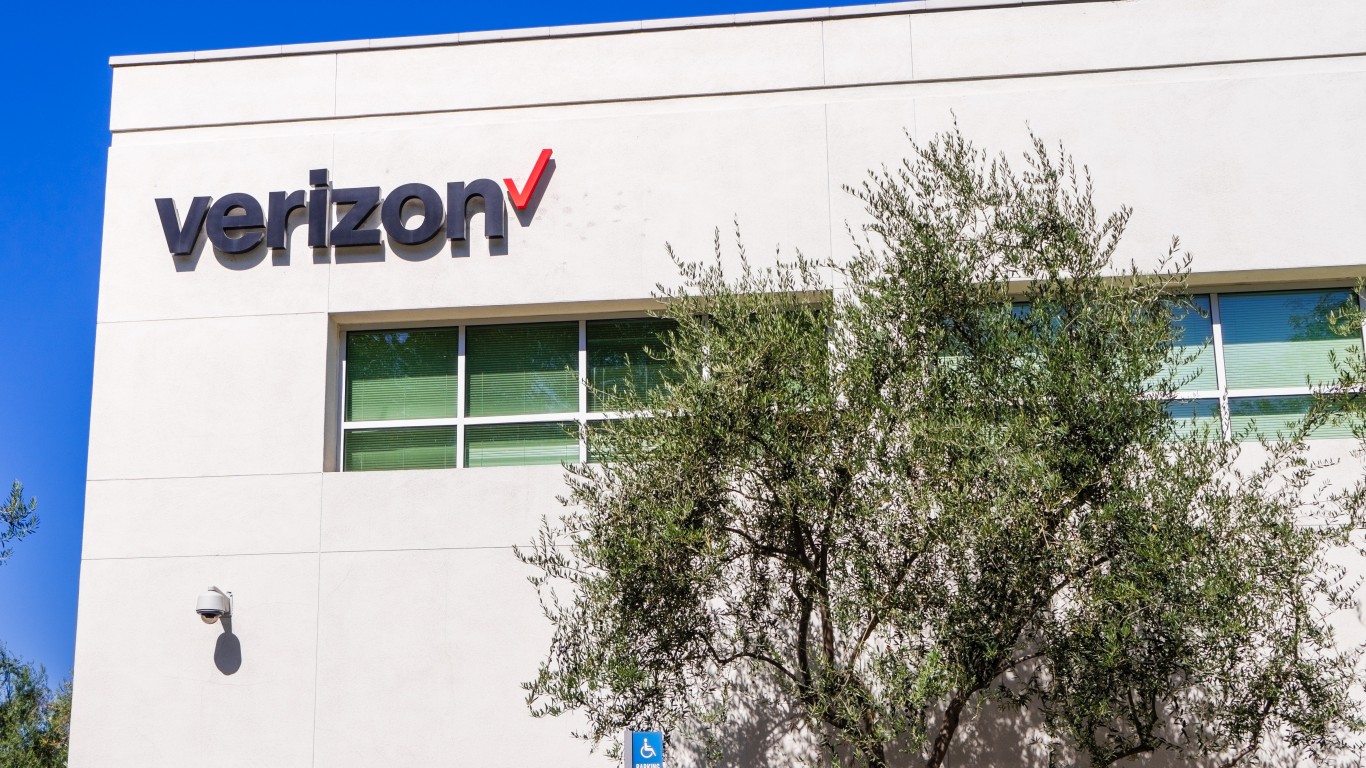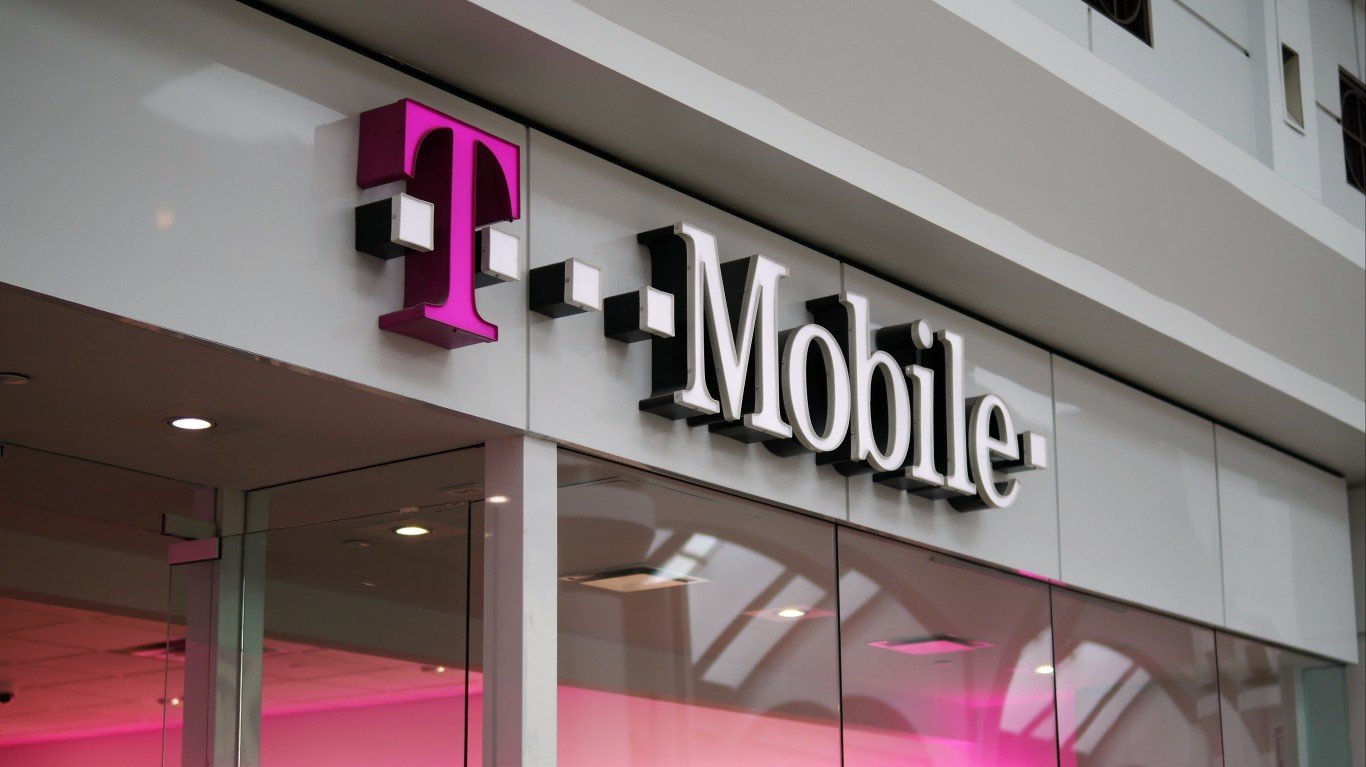

Investing in telecom and media has come with challenges in recent years. After all, there is a cutthroat climate in cable, internet and over-the-top offerings. It seems that no one, and many businesses, even cares about having a landline phone any longer. While four companies (and maybe three ahead) duke it out to steal each other’s customers with bundles or lower prices, even most of the homeless population seems to have a smartphone now. Despite all these secular concerns, telecom and cable companies still generally have seen a good 2019 — and there may be continued upside in 2020.
As for AT&T Inc. (NYSE: T), its stock had been dead money for too long to figure. In the wake of its DirecTV acquisition being followed by an expensive Time Warner media acquisition, all of a sudden AT&T was last seen up over 31% on a total return basis (gains and dividends) so far in 2019. That’s slightly better than the tech-heavy Nasdaq-100, and it is seven percentage points better than the S&P 500 and 13 points better than the Dow Jones industrials.
[in-text-ad]
Now investors have to be asking themselves if AT&T’s rise can continue into 2020. At least some on Wall Street feel it can outperform next year. The big issue to consider is that rival Verizon Communications Inc. (NYSE: VZ), which had held better in prior years, was only up 7% on a total return basis in 2019. Sprint Corp. (NYSE: S) remains down about 2%, and would-be acquirer T-Mobile US Inc. (NASDAQ: TMUS) was last seen up about 22% year to date.
While there is much riding on the Sprint/T-Mobile merger for cellular communications, it still has a chance of being completed, and that’s good for both AT&T and for Verizon due to a three-way fight being better than a four-way one.
AT&T itself sees full-year 2019 free cash flow around $28 billion and its EBITDA margin is expected to grow by 200 basis points by 2022. The company’s revenue growth is expected to come from wireless, WarnerMedia and some from Mexico, and its margin growth is expected to come primarily from wireless, merger synergies, Mexico and a focus on operating cost containment. CFO John Stevenson showed guidance on how it expects to improve its balance sheet as follows:
The company has begun retiring shares and is evaluating a 100-million-share accelerated share repurchase program for the first quarter of 2020. By the end of 2022, AT&T expects to retire 100% of the debt it incurred to acquire Time Warner, targeting a net debt-to-adjusted EBITDA ratio in the 2.0x to 2.25x range, and expects this to lead to an upgrade in its debt ratings.
In a cobbled-together list of would-be top picks for 2020, Merrill Lynch has a Buy rating and a $43 price objective. That was implied upside of 15% from the $37.50 share price, or about 20% if you include the dividend, and it’s based on a price-to-earnings (P/E) multiple of 12 times the firm’s fiscal year 2020 earnings per share (EPS) estimate. The valuation was deemed warranted here as AT&T faces challenging operating trends within its TV business, along with higher leverage and integration risk. That said, the firm sees its negatives offset by higher earnings expectations and faster growth after taking the impact of stock buybacks and cost savings into consideration.
Merrill Lynch covers rival Verizon as the back-up call in telecom. It has a Buy rating on Verizon, but the firm’s $64 price objective is less than 10% raw upside from the $60 or so current share price. Verizon’s 0.8 multiple against the S&P also comes with a slightly higher valuation of 13 times expected 2020 EPS.
Nomura/Instinet’s Jeffrey Kvaal has reiterated his Buy rating on AT&T, along with his $44 target price. That’s a tad better than the $43 price objective of Merrill Lynch, and Kvaal said that, after a recent meeting, AT&T still sees a very strong consumer and more moderate business spending climate. He is calling for just 1% to 2% sales growth compounded annually through 2022 in a move that will be led by mobility, with lower churn and bundles carrying it forward. Kvaal also sees AT&T’s entertainment and business wireline likely staying more or less flat, with lower capital spending and a combination of lower costs, and share buybacks driving material EPS growth that is not factored into guidance.
Kvaal showed that AT&T expects EPS to reach $4.50 to $4.80 in 2022, up from about $3.56 expected in 2019. Also noted is that free cash flow should fuel buybacks, while it continues to chomp away at that mountain of debt, and AT&T is believed to have a modest interest in coming spectrum auctions.
[in-text-ad]
Credit Suisse reiterated its Outperform rating and $65 target on Verizon in November, but that’s still less than 10% in implied upside ahead before factoring in the dividend. Unfortunately for the AT&T bulls, Credit Suisse has a Neutral rating and a $36 target price that would imply a modest downside risk at this time.
AT&T shares had peaked closer to $39.75 in November but have since pulled back down to $37.50 to $38.00. Its $276 billion market cap is massive, and the company has a mostly U.S.-centric focus that allows it effectively to have no cares or concerns about U.S./China trade wars, other than how it will affect smartphone prices.
Some cautious analyst reports were issued in November around AT&T’s stock drop. A small firm, MoffettNathanson, cut its already-cautious Neutral rating to Sell, along with a $30 target price. HSBC Securities also cut its rating to Hold from Buy on valuation, with a $42 upside target. Prior to that, the analyst brigade in 2019 had been full of upgrades and price target hikes.
At the end of October, independent research firm Argus reaffirmed its Buy rating with a whopping $48 price target. That was after lackluster earnings were overshadowed by the company’s new operating and capital allocation plan and the introduction of its new HBO Max subscription video-on-demand service. AT&T also has issued forecasts noting that the company expects subscriber losses from the Entertainment Group (DirecTV) to slow significantly.
AT&T shares had become disappointing enough in 2018 that the end of year share price went under $30, after having been above $40 as recently as 2016. Its mountain of debt remains a concern at just above $150 billion, but AT&T has taken that debt load down almost 10% in just over a year, and its strong cash flow should allow the company to keep chomping down on the debt ahead. AT&T still comes with a 5.4% dividend yield for new investors that is handily above the 4.1% yield from rival Verizon, and even the more cautious analysts seem to believe that AT&T can keep marginally growing its dividend while it also can use cash flow (and raw earnings) to pay down debt.
Of course, there are no assurances that, given Wall Street strategists calling for 8% to 10% continued upside in stocks in 2020, AT&T will continue on its recovery. That said, it’s dividend yield is more than twice the yield of the 30-year Treasury note, and its dividend hike streak of about 35 years and a commitment to have modest dividend growth ahead should lay some solid ground for value and income investors alike.
Sponsored: Find a Qualified Financial Advisor
Finding a qualified financial advisor doesn’t have to be hard. SmartAsset’s free tool matches you with up to 3 fiduciary financial advisors in your area in 5 minutes. Each advisor has been vetted by SmartAsset and is held to a fiduciary standard to act in your best interests. If you’re ready to be matched with local advisors that can help you achieve your financial goals, get started now.
Thank you for reading! Have some feedback for us?
Contact the 24/7 Wall St. editorial team.
 24/7 Wall St.
24/7 Wall St.

